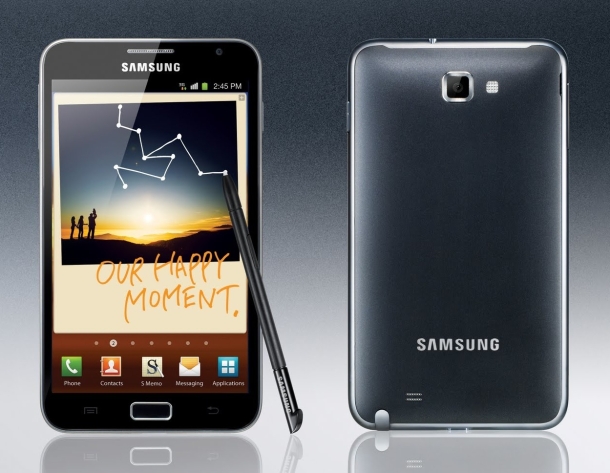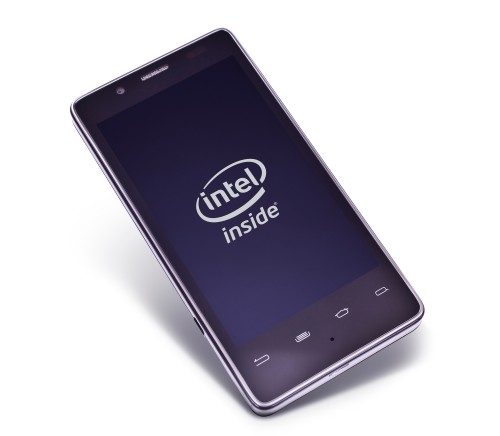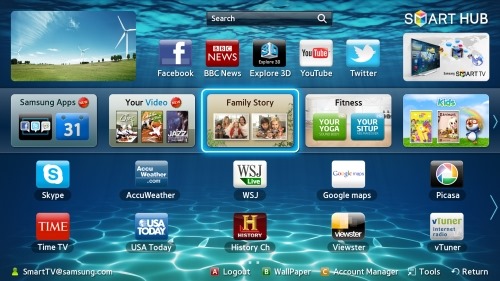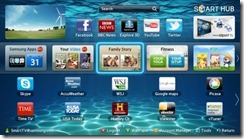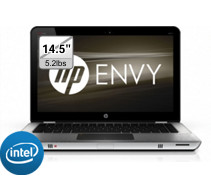Apple just gave the rest of the industry 1 billion, 49 million, 353 thousand, 540 reasons why they should not drift too close to Apple’s patents or designs.
Tag: Samsung
Musings on Apple v. Samsung
As you may well know, the tech industry is currently enthralled with the Apple v. Samsung, Samsung v. Apple patent and trade dress trial. I’ve been reluctant to talk about the trial. As a wise man recently told me, the trial is bringing out a whole new level of stupid in people. No matter what I say, no matter how carefully I craft my words, I’m sure to offend somebody – and perhaps a whole lot of somebodys – and subject myself to emotion laden attacks and irrational rants springing from that newly tapped fount of stupid.
Still, I’m going to risk it. Because it’s not just Apple and Samsung who have to live with the results of this case. We all will. And there’s a few things that we should try to get straight in our minds before the trial comes to an end.
Question: If Apple or Samsung wins, will it forever alter the tech industry?
In a word,”No”.
If Apple loses this case…life goes on. Apple will have lost virtually nothing. There will be a legal precedent making it even harder for Apple or anyone else to protect their patents and trade dress. But Apple’s been living with the real or imagined consequences of that reality for years and years already. Losing the case will not change how the parties act, it will simply reinforce the status quo. A Samsung victory might even increase innovation as Apple, and everyone else, realizes that patent law is a poor form of protection and that the only real way to compete is to outrace your competitors in the marketplace. And that’s not such a bad thing.
If Apple wins the case…life goes on. Samsung pays the damages or appeals the case or whatever. Samsung is not a broken company – not nearly, not by a long shot. Samsung makes a few tweaks to their existing phones and tablets, makes them look a little different, act a little different, and their devices continue to sell and sell very well. An Apple victory might even increase innovation as Samsung, and everyone else, realizes that they have to create unique new varieties of products in order to compete. And that’s not such a bad thing.
Question: Then why is Apple Suing Samsung?
Well, it’s not for the money. Apple is asking for $2.5 billion in damages. Apple makes more than $2.5 billion in profit every 30 days. And they have $118 billion in the bank. It would be senseless for them to have devoted as many resources to this case as they have simply to pick up the monthly rent check.
And it’s not for the injunctions. Most of the disputed phones are already off the market. Some of the rest soon will be. And for those that remain, most can be “cured” of patent infringement merely by making some minor tweaks in their existing software.
And it’s not to drive Samsung out of the mobile computing business. $2.5 billion is a lot of money and Samsung doesn’t sport the hundred billion dollar checking account that Apple does. But Samsung could literally write a check for that amount and then go their merry way. The potential damages – which will be delayed for years and possibly be mitigated by an appeals court – may be substantial but they’re not going to significantly alter Samsung’s prospects or change the balance of power in the tech world.
Question: So why? Why is Apple doing this? What is this all about?
This is a warning shot fired across the bow of the entire computing industry. “Violate our patents,” Apple is saying, “and there is no amount of time, effort and expense that we will not expend to take you to court in order to rectify the matter. “Mess with us,” Apple is saying, “and we will come after you with everything we’ve got. And we are relentless.”
Apple’s purpose, in other words, is to put a stop to FUTURE infringements of their intellectual property.
Question: Will Apple’s strategy work?
Maybe so.
Even if Apple loses this case, they’ve made the point that if your product drifts too close to theirs, they can tie you up in court for years and years. And if Apple wins the case, well, they’ve turned that warning shot I mentioned, above, into a 2.5 billion dollar fusillade.
Question: Is Apple’s strategy wise?
Maybe not.
I see what Apple is trying to accomplish here but, – and this is going to sound strange coming form an attorney – personally, I wish they hadn’t tried to use the courts to solve their patent problems. Seems like an awful lot of trouble for very little return. Feel free to disagree. I’m quite sure that Apple does.
If, in some fantasy world, Apple CEO, Tim Cook, came to me for advice on this matter, I’d tell him this:
“Patents and trade dress don’t much matter. You may have a legal right to enforce your patents, but as a practical matter, they are virtually unenforceable.”
“Apple is a leader. Act like one. Other companies are always going to copy you. Get over it. Out innovate them. That’s what you’re good at. Do what you do best and do it faster than the rest. As a company, Apple will always be a lot more successful in the open market than they’ll ever be in open court.”
5 Million Galaxy Note Shipments Proves One Thing
 I am actually not surprised at the news that Samsung has shipped (not sold) 5 Million Galaxy Note smart phones. Given that it is doubtful that Samsung will reveal actual sales figures as well as regional breakdowns, my educated guess is that most of these devices were shipped and sold in Korea, as also pointed out by this CNET article.
I am actually not surprised at the news that Samsung has shipped (not sold) 5 Million Galaxy Note smart phones. Given that it is doubtful that Samsung will reveal actual sales figures as well as regional breakdowns, my educated guess is that most of these devices were shipped and sold in Korea, as also pointed out by this CNET article.
If they shipped or sold nearly that many in the US that would be impressive but just like the first Galaxy Tab, I have a strong hunch the device was appealing in Korea. What this proves is how potentially different each region may be in terms of their consumer preferences. This is key to understanding these markets because the way in which different regions mature with regards to smart phones and tablets has huge impacts on regional device strategies.
My firm has a history of researching and studying consumer adoption cycles of technology products. What is becoming clear to us is that each regional consumer base may not have universally similar traits. This is reminiscent of much of the miniaturization efforts of Notebooks and other gadgets from Toshiba and Sony and their wild success in Japan alone. Of course both of those companies were based in Japan so of course Japanese consumers would be loyal. However, Japanese consumers did have a desire for smaller gadgets which is why many of those products were successful there and almost no where else in the world.
This again is what I think is happening with the Galaxy Note and there is of course nothing wrong with devices having regional success. In fact strategically designing for not only market segments but also regions is a smart global strategy.
I actually applaud Samsung’s efforts to differentiate and experiment with new form factors and use cases. The Note is positioned uniquely in the market both in terms of size and with the pen accessory and that alone is enough to get some consumers to at least check it out. This is one of the better examples of late of an Android device being designed to stand out in the sea of sameness that is Android devices.
Whether or not these devices are mass market or even global successes is largely irrelevant for the time being. What matters is that consumers are exposed to a variety of different choices and options with regards to their technology.
MWC 2012: Clear Android Differentiation and Other Trends
 I suspect that each MWC will be better than the last. This show, I believe, is quickly becoming the leading industry conference for mobile smart device technologies. Therefore, Mobile World Congress will be one of the shows were we can expect to dig into the trends of our mobile computing tomorrow. On that point, this year a few things stand out.
I suspect that each MWC will be better than the last. This show, I believe, is quickly becoming the leading industry conference for mobile smart device technologies. Therefore, Mobile World Congress will be one of the shows were we can expect to dig into the trends of our mobile computing tomorrow. On that point, this year a few things stand out.
Android Differentiation
Bloggers, journalists, some pundits, etc, mostly seem to believe the world would be a better place if Google’s OEM partners simply did not change Android and just shipped a stock OS the likes of the Nexus line of devices. Unfortunately in that reality hardware companies go out of business. Therefore differentiation is key if pure hardware players hope to stay in business.
Related Column: Dear Industry Dare to Differentiate
After seeing many of the Android device announcements from the leaders like Samsung and HTC, it is clear they are fully marching down the path of strategically differentiating from the pack. This I believe is a good thing all together.
Samsung for example is taking a stab with their Galaxy Note line of products at differentiating their device experience by pairing it with a companion pen experience. HTC did something similar with the Flyer but has seemed to have abandoned that path for now. For Samsung however, including the pen as an accessory (which is where it belongs) has opened the door to bundling exclusive and proprietary software in order to enhance the pen experience. Samsung is shipping with the Galaxy Note Phone (I refuse to support the Phablet term), and the Galaxy Note 10.1 tablet, Adobe’s touch suite of products like Photoshop and Ideas. Samsung is also including their own S Note application for note taking and other useful pen experiences. Samsung is wisely using this strategy as a key differentiator and if you watch any screen media you will see their marketing is fully committed to this direction.
HTC has also been going down this path and has now furthered their strategy even more with the new Sense 4.0 UI.
Beyond Samsung, pen accessories at large seem to be a trend around Android tablets. LG announced their Optimus VU with a pen accessory and I expect pen accessories to continue to be used as a differentiator for the time being.
It is clear at this point there will be no stock Android prioritized devices by the OEMs, thus I question the market at all for Nexus devices. Throw on top of that the fact that the stock Android devices running the latest release take over a year to roll out in any large fashion. John Gruber makes a great observation:
Best to think of today’s Ice Cream Sandwich as a developer preview of next year’s mass market Android phones.
Focus on Device Family Brands
The other trend I am noticing, which is also a positive sign, is that HTC and Samsung for example are focusing more on family lines of devices. Peter Chou of HTC during their press conference announced that HTC intends to streamline their roadmap and focus HTC innovations. HTC kicked this off by releasing a new family line of devices called the One “series.” Their flagship product is the HTC One X which sports the latest Tegra 3 chipset from NVIDIA.
Samsung also is heading this direction with the Galaxy S series, Tab family and now with the Galaxy Note. Motorola also hopefully continues this direction with the Razr family. And Nokia as well with their Lumia line of devices. This direction is needed within the industry in order to stop the absurd device naming syndrome that has plagued many OEMs. When you have dozens of devices in channel all with different names and marketing material blitzing consumers with dozens of device names etc, the landscape can look incredibly confusing.
By focusing on a family line of devices, OEMs can differentiation and then position those differentiating features within a family line of devices for their appropriate target audience.
All in all, I am seeing some positive trends coming out of MWC 2012 that encourages me about the state of healthy competition within the mobile smart devices landscape.
The Case for Intel’s Future Smartphone Success
In my many weekly conversations with industry insiders we discuss Intel’s chances in mobility markets, specifically smartphones. Few people are betting against Qualcomm and for very good reason in that they are entrenched at handset vendors and their 2012 roadmap, at least on paper, looks solid. What few are discussing is how Intel will pick up market share. My last column on Intel’s smartphone efforts outlined what Intel needs to demonstrate quickly to start gaining share and getting people to believe they can be a player. Now I want to take a look at why I believe Intel can and will pick up relevant market share over the next three years.
Intel Finally Broke the Code with Medfield
This isn’t Intel’s first time in mobility. Intel owned XScale, an ARM-based mobile processor that was in the most popular WinCE devices like the Compaq iPaq, one of the more popular Pocket PCs. XScale products even  powered Blackberrys for a time as well. Intel sold the entire XScale mobile application processor business to Marvell in 2006 for $600M. This move was driven by Intel’s desire to focus on X86 designs. What followed were some failed mobile attempts with Menlo and Moorestown, two low power, Atom-branded processors that made their way into MIDs (Mobile Internet Devices). It appeared that Intel would make grand announcements with big names like LG for smartphones then nothing would happen afterward. Things are very different with Medfield. Handsets are at China Unicom in testing for Lenovo and Motorola announced their handsets would be at carriers for the summer.
powered Blackberrys for a time as well. Intel sold the entire XScale mobile application processor business to Marvell in 2006 for $600M. This move was driven by Intel’s desire to focus on X86 designs. What followed were some failed mobile attempts with Menlo and Moorestown, two low power, Atom-branded processors that made their way into MIDs (Mobile Internet Devices). It appeared that Intel would make grand announcements with big names like LG for smartphones then nothing would happen afterward. Things are very different with Medfield. Handsets are at China Unicom in testing for Lenovo and Motorola announced their handsets would be at carriers for the summer.
Medfield is a huge step forward in design and integration for Intel. First, it combines the application processor with I/O capabilities on a single chip. This saves handset makers integration time and board space. Secondly, it is paired with the Intel XMM 6260 radio based on the Infineon Wireless Solutions (WLS) acquisition. This increases the Intel revenue BOM (Bill of Material) and also helps with handset integration. Finally, Intel has embraced the Android mobile OS in a huge way with a large developer investment and will provide optimized drivers for Medfield’s subsystems. This move is in contrast to their MeeGo OS efforts that didn’t go anywhere. Intel has even gone to the effort to emulate ARM instructions so that it can run native apps that talk directly to ARM. These apps are typically games that need to be closer to the hardware. This is a very good start for Intel, but as I tell my clients, if there are 10 steps to mobile silicon success, Intel just successfully crossed step 3.
It’s a Tough Smartphone Market
Intel made some very serious headway with Medfield, but it is a very competitive market out there. According to IDC, in Q4 2011, Apple and Samsung combined to garner almost 50% of the smartphone market. As I pointed out in my previous column, Apple already designs their A-Series processors and I don’t see that changing. I expect Samsung with the exception of the very low end to lean into their own Exynos silicon. Nokia at 12% Q4 smartphone share is tied to Windows Phone and Qualcomm at least for the short term. Struggling RIM doesn’t need another variable to worry about with their muddled operating system strategy and is currently tied to Qualcomm. Finally, HTC is rumored to tie up with NVIDIA on its Tegra platform on the high end. Who does this leave for Intel?
For Intel in the short term, with Motorola and Lenovo on-board, this leaves private label for carriers, LG, Sony, ZTE, Huawei, Kyocera, Sanyo and a very long tail of small manufacturers. The long tail will be a challenge for Medfield until Intel waterfalls the products line to be cost-competitive with lower end models. I expect Intel to start waterfalling products down in the end of 2012.
Why Intel Could Succeed
While I outlined the many challenges, Intel could very well succeed in the space longer term. First, the phone marketplace is a rapidly changing market. Not only have there been tremendous share shifts in the last two years, but feature phones are migrating to smartphone market resulting in exploding growth.
Operating systems are clear from shaking out. Microsoft will not go gently into the night with Windows Phone and will invest what it takes to be successful even if it takes another Nokia-like investment to own another platform. I also believe once Microsoft starts gaining share, they will devote resources for X86 on Windows Phone 8 or 9 platforms. They see Intel as successful with Medfield and the WINTEL alliance could be brought back from the dead. Long-term, I do not believe Samsung will be happy licensing someone else’s operating system, particularly with Apple’s integration and experience success. I expect Samsung to do one of three things, possibly two; increase investment in Bada to a point that it can compete with Android in a closed environment, embrace webOS, oe lean heavily into Tizen. Marketplaces in dynamic change are an opportunity for newcomers, even companies worth $140B like Intel.
One other important factor that hasn’t fully played out is “carrier versus handset-maker” dominance. Up until the Apple iPhone, the carriers dictated terms to the handset makers. Every carrier who has adopted the iPhone has taken a gross margin reduction. This doesn’t mean they made a bad decision; they had to carry the iPhone. That carrier margin reduction money is going to Apple and not the carriers. Carriers are strategizing how they can regain that dominance going forward and I believe Intel will part of those plans. Intel has the capability to partner with an extremely low cost manufacturer or ODM an entire solution, white label it to a carrier and provide a competitive Android experience. I expect a few key announcements this month at this year’s Mobile World Congress.
Of course, we cannot forget about Intel’s technology. According to tests run at Anandtech, Intel’s Medfield is competitive in power at 32nm LP so you must assume that it only gets better at Intel’s 22nm 3DTri–Gatetechnology. Intel will roll Atom into 22nm in 2013 and 14nm in 2014. This is all the while in 2012 TSMC is at best case at 28nm and GLOBALFOUNDRIES and Samsung is at 32nm.
I define success as the ability to reach a relevant level of profitable business that supports the desired brand goals. For Intel, this doesn’t need to be 80% like they have in the PC market, but needs to be a profitable 20%.
What this Means for Intel, Qualcomm, Texas Instruments, and NVIDIA
Over a period of three years, Intel will start to take market share from Qualcomm, Texas Instruments and NVIDIA, albeit very small in 2012. As Intel integrates wireless, moves to 14nm, and waterfalls their offerings to lower price point smartphones, this makes much more competitive to handset makers and carriers. I expect Huawei, ZTE, or a major carrier to go big with Intel in 2013 which will make a huge difference. One thing to remember about Intel; unlike others in the marketplace, Intel also captures the manufacturing margin TSMC and GLOBALFOUNDRIES makes and the design margin ARM earns. While Intel has a long way to go in proving themselves, they have the start they never had before at a time to take advantage of the mammoth growth in smartphones. Never count Intel out of any market, no matter how many times they have tried and failed.
Maybe Apple Can Fix Television; Someone Has To
Not long before his death Steve Job famously told biographer Walter Isaacson that he had “finally cracked” the problem of television. No one knows quite what he meant, and Apple has shed no light on the subject, but for the sake of the future of TV, let’s hope Steve left something important behind.

At the International Consumer Electronics Show, the overwhelming feeling I got about television is stasis. My colleague Patrick Moorhead has a solid piece on TV makers’ experiments with new user interfaces. But those remain experiments, with no commitment to when, or if, we will see them on TVs you can actually buy. And the user interface, while desperately in need of improvement, is only one piece of a much bigger puzzle.
Related Column: How Sony can beat Samsung and LG on Smart TV Interfaces
The sad truth if you had told me that the TV displays in the Panasonic, Samsung, and Sony booths were actually left over the the 2011 show, I wouldn’t have argued with you. The main difference was much less emphasis on 3D, which the makers now realize is just a feature, not a revolutionary product. Only LG’s booth showed real commitment to 3D, and not necessarily in a good way. Its booth was a jarring riot of gimmicky 3D images coming at you from all sides, an effect allowed by LG’s move to passive, battery-free glasses that don’t need to sync to a particular set. Both LG and Samsung showed 55″ OLED displays, each claiming the world’s largest, but to my eyes OLED remains oversaturated, garish, and a dubious improvement on LED-backlit LCD or plasma.
Even the internet connected TVs, which the makers promoted as this year’s big thing, seemed tired. Basically, they build the capability of a Roku box or other internet-connected device directly into the set. It’s an improvement in convenience, mainly though getting rid of one remote, but hardly enough to send anyone out to buy a new TV.
The fix TV desperately needs is an integrated solution. I want to get all of my TV–the stuff I get over cable as well as the content streamed over the internet in a single box that seamlessly combines all the sources. I don’t much care whether this is built into the set or done in a separate box–the box would have the advantage of allowing ample local storage, while a TV solution would probably have to rely on the cloud to save recorded programs. The difference in convenience is not very significant.
Such a solution would require a new user interface, something much better than Google managed for Google TV. But much more important, and much harder, it requires an entire new business model for content distribution. As I have written many times, the biggest impediment to a this breakthrough is not technology, since the technology needed to make it happen is available today, but breaking the iron triangle of content owners, networks, and cable and satellite distributors who are prospering under the status quo. Can Apple succeed where everyone else has failed? I rather doubt it. But I’m cheering for them anyway.
How Sony can beat Samsung and LG on Smart TV Interfaces
As I wrote last week, Samsung and LG are following Microsoft’s lead in future interfaces for the living room. Both Samsung and LG showed off future voice control and in Samsung’s case, far-field air gestures. Given what Samsung and LG showed at CES, I believe that Sony could actually beat both of them for ease of interaction and satisfaction.
HCI Matters
I have been researching in one way or another, HCI for over 20 years as an OEM, technologist, and now analyst. I’ve conducted in context, in home testing and have sat behind the glass watching consumers struggle, and in many cases breeze though intuitive tasks. Human Computer Interface (HCI) is just the fancy trade name for how humans interact with other electronic devices. Don’t be confused by the word “computer” as it also used for TVs, set top boxes and even remote controls.
Microsoft recently started using the term “natural user interface” and many in the industry have been using this term a lot lately. Whether it’s HCI or NUI doesn’t matter. What does matter is its fundamental game-changing impact on markets, brands and products. Look no farther than the iPhone with direct touch model and Microsoft Kinect with far-field air gestures and voice control. I have been very critical of Siri’s quality but am confident Apple will wring out those issues over time.
At CES 2012 last week, Samsung, Sony, and LG showed three different approaches to advanced TV user interfaces, or HCI.
Samsung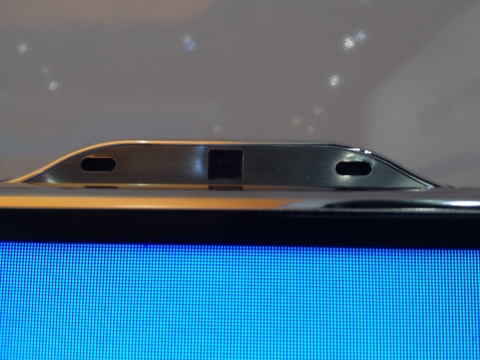
Samsung took the riskiest approach, integrating a camera and microphone array into each Smart TV. Samsung Smart Interaction can do far field air gestures and voice control. The CES demo I saw did not go well at all; speech had to be repeated multiple times and it performed incorrect functions. The air gestures performed even more poorly in that it was slow and misfired often. The demoer keep repeating that this feature was optional and consumers could fall back to a standard remote. While I expect Smart Interaction to improve before shipment, there’s only so much that can be done.
LG
LG used their Magic Motion Remote to use voice commands and search and to be a virtual mouse pointer. The mouse
pointer for icons went well, but the mouse for keyboard functions didn’t do well at all. Imaging clicking, button by button, “r-e-v-e-n-g-e”. Yes, that hard. Voice command search worked better than Samsung, but not as good as Siri, which has issues. It was smart to place the mic on the remote now as it is closer to the user and the the system knows who to listen to.
Sony
Sony, ironically, took the safe route, pairing smart TVs with a remote that reminded me of the Boxee Box remote which has a full keypad one side. Sony implemented a QWERTY keyboard on one side and trackpad on the other side which could be used with a thumb, similar to a smartphone. This approach was reliable in a demo and consumers will use this well after they stop using the Samsung and LG approaches. The Sony remote has microphone, too which I believe will be enabled for smart TV once it improves in reliability. Today the microphone works with a Blu-ray player with a limited command dictionary, a positive for speech control. This is similar to Microsoft Kinect where you “say what you see”.
I believe that Sony will win the 2012 smart TV interface battle due to simplicity. Consumers will be much happier with this more straight forward and reliable approach. I expect Sony to add voice control and far field gestures once the technology works the way it would. Sony hopes that consumers will thank them too as they have thanked Apple for shipping fully completed products. Samsung and LG’s latest interaction models as demonstrated at CES are not ready to be unleashed to the consumers as they are clearly alpha or beta stage. I want to stress that winning the interface battle doesn’t mean winning the war. Apple, your move.
Samsung & LG Validate Microsoft’s Living Room Interaction Model
Microsoft launched Kinect back in November 2010 in a move to change the man-to-machine interface between the consumer to their living room content. While incredibly risky, the gamble paid off in the fastest selling consumer device, ever. I saw the potential after analyzing the usage models and technology for a few months after Kinect launch and predicted that at least all DMA’s would have the capability.
The Kinect launch sent shock waves into the industry because the titans of the living room like Sony, Samsung, and Toshiba hadn’t even gotten close to duplicating or leading with voice and air-gesture techniques. With Samsung and LG announcing future TVs with this capability at CES, Microsoft’s living room interaction strategy has officially been affirmed at CES and most importantly, the CE industry.
Samsung launched what it called “Smart Interaction”, which allows users to control and interact with their HDTVs. Smart Interaction allows the user to control the TV with their voice, air-gestures, and passively with their face. The voice and air gestures operate in a manner similar to Microsoft in that pre-defined gestures exist for different interactions. For instance, users can select an item by grabbing it, which signifies clicking an icon on a remote. Facial recognition essentially “logs you in” to your profile like a PC would giving you your personal settings for TV and also gives you the virtual remote.
A Step Further Than Microsoft ?
Samsung has one-upped Microsoft on one indicator, at least publicly, with their application development model. Samsung has broadly opened their APIs via an SDK which could pull in tens of thousands of developers. If this gains traction, we could see a future challenge arise where platforms are fighting for the number of apps in the same way Apple initially trumped everyone in smartphones. The initial iPhone lure was its design but also the apps, the hundreds of thousands of apps that were developed. It made Google Android look very weak initially until it caught up, still makes Blackberry and Windows Phone appear weaker, and can be argued it was the death blow to HP’s webOS. I believe that Microsoft is gearing up for a major “opening” of the Kinect ecosystem in the Windows 8 timeframe where Windows 8 Metro apps can be run inside the Kinect environment.
Challenges for Samsung and LG
Advanced HCI like voice and air-gesture control is a monumental undertaking and risk. Changing anything that stands between a CE user and the content is risky in that if it’s not perfect, and I mean perfect, users will stop using it. Look at version 1 of Apple’s Siri. Everyone who bought the phone tried it and most stopped using it because it wasn’t reliable or consistent. Microsoft Kinect has many, many contingencies to work well including standing in a specific “zone” to get the best air gestures to work correctly. Voice control only works in certain modes, not all interactions.
The fallback Apple has is that users don’t have to use Siri, it’s an option and it can be very personal in that most use Siri when others aren’t looking or listening. The Kinect fallback is a painful one, in that you wasted that cool looking $149 peripheral. Similarly, Samsung “Smart Interaction” users can fallback to the remote, and most will initially, until it’s perfected.
There are meaningful differences in consumer audiences of Siri, Kinect, and Samsung “Smart Interaction”. I argue that Siri and Kinect users are “pathfinders” and “explorers” in that they enjoy the challenge of trying new things. The traditional HDTV buyer doesn’t want any pathfinding or exploring; they want to watch content and if they’re feeling adventurous, they’ll go out on a limb and check sports scores. This means that Samsung’s customers won’t appreciate anything that just doesn’t work and don’t admire the “good try” or a Siri beta product.
One often-overlooked challenge in this space is content, or the amount of content you can actually control with voice and air gestures. Over the top services like Netflix and Hulu are fine if the app is resident in the TV, but what if you have a cable or satellite box which most of the living population have? What if you want to PVR something or want to play specific content that was saved on it? This is solvable if the TV has a perfect channel guide for the STB and service provider with IR-blasting capabilities to talk to it. That didn’t work out too well for Google TV V1, its end users or its partners.
This is the Future, Embrace It
The CE industry won’t get this right initially with a broad base of consumers but that won’t kill the interaction model. Hardware and software developers will keep improving until it finally does, and it truly becomes natural, consistent, and reliable. At some point in the very near future, most consumers will be able to control their HDTVs with their voice and air gestures. Many won’t want to do this, particularly those who are tech-phobic or late adopters.
In terms of industry investment, the positive part is that other devices like phones, tablets, PCs and even washing machines leverage the same interactions and technologies so there is a lot of investment and shared risk. The biggest question is, will one company other than Microsoft lead the future of living room? Your move, Apple.
Gaming AMD’s 2012 Strategy
AMD intends to pursue “growth opportunities” in low-powered devices, emerging markets and Internet-based businesses.
There’s an awful lot of mis-guided analysis wafting about regarding AMD’s new strategic direction, which the company says it will make public in February. This piece is to help you (and me) sort through the facts and the opportunities. I last took a look at AMD’s strategies earlier this year, available here.
Starting With the Facts
- AMD is a fabless semiconductor company since 2009. The company depends on GlobalFoundries and soon Taiwan Semiconductor to actually fabricate its chips;
- In its latest quarter, AMD had net income of about $100 million on $1.7 billion in revenue. Subsequently, the company announced a restructuring that seeks to cut costs by $118 million in 2012, largely through a reduction in force of about ten percent;
- AMD has about a 20% market share in the PC market, which Intel says is growing north of 20% this year, largely in emerging markets;
- AMD’s products compete most successfully against rival Intel in the low- to mid-range PC categories, but 2011 PC processors have underwhelmed reviewers, especially in performance as compared to comparable Intel products;
- AMD has less than a 10% market share in the server market of about 250,000 units, which grew 7.6% last quarter according to Gartner Group;
- AMD’s graphics division competes with nVidia in the discrete graphics chip business, which is growing in profitable commercial applications like high-performance supercomputing and declining in the core PC business as Intel’s integrated graphics is now “good enough” for mainstream buyers;
- AMD has no significant expertise in phone and tablet chip design, especially the multi-function “systems on a chip (SOCs)” that make up all of today’s hot sellers.
What Will AMD CEO Rory Read’s Strategy Be?
I have no insider information and no crystal ball. But my eyebrows were seriously raised this morning in perplexity to see several headlines such as “AMD to give up competing with Intel on X86“, which led to “AMD struggling to reinvent itself” in the hometown Mercury News. I will stipulate that AMD is indeed struggling to reinvent itself, as the public process has taken most of 2011. The board of directors itself seems unclear on direction. That said, here is my score card on reinvention opportunities in descending order of attractiveness:
- Servers — For not much more work than a desktop high-end Bulldozer microprocessor, AMD makes Opteron 6100 server processors. Hundreds or thousands more revenue dollars per chip at correspondingly higher margins. AMD has a tiny market share, but keeps a foot in the door at the major server OEMs. The company has been late and underdelivered to its OEMs recently. But the problem is execution, not computer science.
- Desktop and Notebook PCs — AMD is in this market and the volumes are huge. AMD needs volume to amortize its R&D and fab preparation costs for each generation of products. Twenty percent of a 400 million chip 2011 market is 80 million units! While faster, more competitive chips would help gain market share from Intel, AMD has to execute profitably in the PC space to survive. I see no role for AMD that does not include PCs — unless we are talking about a much smaller, specialized AMD.
- Graphics Processors (GPUs) — ATI products are neck-and-neck with nVidia in the discrete graphics card space. But nVidia has done a great job of late creating a high-performance computing market that consumes tens of thousands of commercial-grade (e.g., high price) graphics cards. Intel is about to jump into the HPC space with Knight’s Corner, a many-X86-core chip. Meanwhile, AMD needs the graphics talent onboard to drive innovation in its Fusion processors that marry a processor and graphics on one chip. So, I don’t see an AMD without a graphics component, but neither do I see huge profit pools either.
- Getting Out of the X86 Business — If you’re reading along and thinking you might short AMD stock, this is the reason not to: the only legally sanctioned software-compatible competition to X86 inventor Intel. If AMD decides to get out of making X86 chips, it better have a sound strategy in mind and the ability to execute. But be assured that the investment bankers and hedge funds would be flailing elbows to buy the piece of AMD that allows them to mint, er, process X86 chips. So, I describe this option as “sell off the family jewels”, and am not enthralled with the prospects for success in using those funds to generate $6.8 billion in profitable revenue or better to replace today’s X86 business.
- Entering the ARM Smartphone and Tablet Market— A sure path to Chapter 11. Remember, AMD no longer makes the chips it designs, so it lacks any fab margin to use elsewhere in the business. It starts against well-experienced ARM processor designers including Apple, Qualcomm, Samsung, and TI … and even nVidia. Most ARM licensees take an off-the-shelf design from ARM that is tweaked and married to input-output to create an SOC design, that then competes for space at one of the handful of global fab companies. AMD has absolutely no special sauce to win in the ARM SOC kitchen.To win, AMD would have to execute flawlessly in its maiden start (see execution problems above), gain credibility, nail down 100+ design wins for its second generation, and outrace the largest and most experienced companies in the digital consumer products arena. Oh, and don’t forget volume, profitability, and especially cash flow. It can’t be done. Or if it can be done, the risks are at heart-attack levels.
“AMD intends to pursue “growth opportunities” in low-powered devices, emerging markets and Internet-based businesses.” One way to read that ambiguous sentence by AMD is a strategy that includes:
- Tablets and netbooks running X86 Windows 8;
- Emerging geographic markets, chasing Intel for the next billion Internet users in places like Brazil, China, and even Africa. Here, AMD’s traditional value play resonates;
- Internet-based businesses such as lots of profitable servers in the cloud. Tier 4 datacenters for Amazon, Apple, Facebook, Google, and Microsoft are a small but off-the-charts growing market.
So, let’s get together in February and see how the strategy chips fall. Or post a comment on your game plan for AMD.
Apple is Still the #1 Smartphone Vendor
 There has been quite a bit of interesting media and headlines this last week pointing to data related to Samsung’s latest earnings and smartphone shipments. Many are making the claim that Samsung is now the number one smartphone vendor by volume. However, when we dig deeper into the numbers we find a different story.
There has been quite a bit of interesting media and headlines this last week pointing to data related to Samsung’s latest earnings and smartphone shipments. Many are making the claim that Samsung is now the number one smartphone vendor by volume. However, when we dig deeper into the numbers we find a different story.
First (something that shockingly needs to be continually pointed out), the numbers released in Samsung’s earnings of 27.8 million smart phones shipped is product shipped into the channel not sold to consumers. In reality the carriers stores are Samsung’s customers since their goal is to sell phones to carriers who then try to sell them to consumers. This is called having a channel strategy, something Apple does very differently due to their rather large retail presence. Another differentiating point regarding numbers is that Apple actually releases the number of products sold to consumers where many other companies do not.
Second, the statement that Samsung is the largest “shipper” of smartphones can only apply to Samsung’s Q3 for 2011 not per annum. Apple still sells annually more smartphones than any other manufacturer.
It is tough to say exactly how many smartphones Samsung “shipped” into channel in 2011 to-date since they did not disclose smartphone shipment data in their Q2 earnings. That being said I’ve seen credible attempts to break down estimates and the most logical number I have found for “shipments” into channel from Samsung thus far in 2011 is 50.2 million. In that same period (since January of 2011) Apple SOLD 56.09 iPhones. This is why I am confident Apple is still the number one smartphone vendor. One last point here, we believe Apple will SELL north of 25 million iPhone’s (conservatively) in this upcoming holiday quarter.
We need to be much wiser if we are going to make headlines with market share claims. I understand to many market share is a big deal but I don’t believe it is as big a deal as people make it out to be.
Henry Blodget of Business Insider makes a point that I disagree with. In his column on why Apple should be worried about this Samsung data he states:
As the history of the tech industry has demonstrated again and again, technology platform markets tend to standardize around a single dominant platform. Although several different platforms can co-exist while a market is developing, eventually a clear leader emerges. And as it does, the leader’s power and “network effects” grow, while the leverage of the smaller platforms diminishes.
I don’t disagree that Henry’s observation is true, I simply don’t believe it will be true in the future. The flaw in this observation is that it is only true when a new product, technology or market begins and moves to maturity. As a market matures, it is true that a standard emerges. This standard helps drive the market to maturity. Once the market matures however it becomes saturated with many variations and departures from the standard.
For Henry’s statement to have absolute truth we would need to look farther back than just the technology industry to ALL consumer products. If we do that we find that what I pointed out is always true. Once a market matures it fragments and thus there is no longer a dominant market leader. Study consumer packaged goods, automobiles, consumer appliances and more and you will find this to be true.
This is why I am confident that Apple, Android and most likely Windows Phone will all compete for market mobile share but there will be no dominant leader like there was when Microsoft had 98% Windows share. That future will not happen, as all three platforms will co-exist and each have chunks of the market to themselves.
Smartphones are 5% of global handset shipments world-wide. If we think that this game is anywhere close to being over we would be deceiving ourselves. We have a long journey ahead and one hopefully filled with tremendous competition, because when that happens consumers always win.
H-P’s Apotheker: We Want to Split H-P Into Two Companies
H-P CEO Leo Apotheker has a very different set of talking points this week than he did last week in a hastily called teleconference after a trading halt which announced the halt to WebOS investments and the spinoff of the $38 billion Personal Systems Division (PSD). Analysts and Wall Street immediately started picking likely buyers of H-P’s PC product line.
But Monday’s interview with the Wall Street Journal tells a different story with a decidedly different outcome for shareholders. Quoting Apotheker:
What we’re really doing is creating two companies: One focused on the enterprise, and one which will be a highly-effective, end-user device business. It will be much more than PCs.
These businesses are ticking at different speeds, need to have different structures, and make different investment decisions. The device business [is] a fast moving consumer business. If you want to compete in this business you have to be much faster than a conglomerate can move in most circumstances.
The other side of H-P, the enterprise side, that’s where we acquired Autonomy. We have some great ideas for how we can scale that business.
Our default option is to see if we can spin this business off to our shareholders. That’s not the only option that we’re looking at. The board and management have been working on this for quite some time. If we really want to take the necessary steps, you have to involve a lot of people and once you inform a lot of people you need to inform the market.
We said it would take anywhere from 12 to 18 months to complete the spin, and it’s obvious that the decision will happen much sooner. The board will want to make the best decision for shareholders and our current hypothesis is that is by spinning the business to shareholders.
This different story — or Friday’s story told better — is a lot less suicidal than throwing PSD off the bus to the highest rapacious bidder. Motorola did this last year, spinning the personal devices company off from radios and public sector. So there certainly is precedent.
But what do we make of “one which will be a highly-effective, end-user device business. It will be much more than PCs?” My reading is everything consumer including phones, PCs, and printers. If Leo really wants to focus on medium and large enterprises, he’ll throw in transactional servers, storage, and maybe even the entire small-medium business (SMB) organization.
If the spinoff to shareholders looks like my sketch above, it’s not a bad strategy. Makes H-P kinda look like Samsung, which makes smartphones and oil tankers through highly decentralized business units.
Here are the concerns H-P shareholders face in considering a deal, once announced:
- It’s all about execution. Slamming together PCs and printers does not ensure success. And even enterprise company sales reps sell PCs, or used to. The devil is in the details.
- The independent, entrepreneurial culture does not exist at H-P. Where does the PC Newco innovation DNA come from?
- By over-spending in a $10 billion bid for Autonomy, H-P has only $3 billion in cash. Where does PC Newco get the billions it will need for R&D and cash flow? Underfunded, the effort will quickly disintegrate.
- Did the premature and botched announcement of the spinoff last Friday freeze PSD staffers like deer in headlights? Will the human capital disappear before PC Newco really gets started? Didn’t $5 billion in Palm WebOS investment get vaporized?
- Can any big PC company — with the glaring exception of Apple — do much better than 6% margins in a fast-churn product rat race?
- How will consumers react to PC Newco branding (let alone products)? When IBM spun off PCs to Lenovo, the valued ThinkPad brand went to Lenovo. take away the H-P name and logo, and the products won’t sell as readily. And Pavilion as a brand does not come close to the value of ThinkPad.
We’ll leave how the rest of the PC ecosystem might react to the PC spinoff to another day.
via H-P CEO Apotheker Defends Strategy – WSJ.com.
Chromebooks: What Netbooks Should Have Been All Along
When netbooks were first launched in late 2008, they were billed as clamshell devices meant to access the internet. About a decade earlier, these devices were also referred to as internet appliances. These netbooks were much less expensive than notebooks at the time, partly because of their limited functionality and partly because of their sleek size (eliminating components such as optical drives). The concept of these devices quickly devolved as consumers focused on price. Brands seized the growing demand opportunity and slapped together miniature notebooks using what they had at the time: notebook components.
What the industry was left with was inexpensive small notebooks, not internet access devices, but “net” books. Many research firms, including DisplaySearch, took to calling netbooks “mini-notes” because they were recognized as miniature notebooks. Research firms took a lot of heat from PC brands, component makers, and others who were worried that if these inexpensive mini-notes were thought of as notebooks, they would lead to lower average selling prices of notebooks. That is what ended up happening. Now the mini-note category is shrinking as brands move away from the modest margins of mini-notes to tablet PCs, while the need and opportunity for devices specialized for internet access remains.
Enter the Chromebook, a clamshell device whose main objective is to access the internet, with some versions coming in at mini-note prices; a case in point is the Acer AC700-1099, selling for $349. Some have said that Chromebooks will be doomed from the start because of the impression that they need a mobile broadband connection to be of any use. I’d say that’s a marketing error that needs to be corrected: Chromebooks can use WiFi to connect to the internet and can be useful anywhere there is a hot spot. The goal is convenience, not productivity. For consumers looking for an instant-on device with a long battery life and sleek design, just for connecting to the web for email and accessing digital media, Chromebooks will be of interest.
Chromebooks have recently started selling, so it’s too early to judge the market’s reaction. However, informal indications seem to point to some traction. As of this writing, the Acer Chromebook was ranked sixth on Amazon.com’s bestsellers list for laptops, and the more expensive Samsung Series 5 in silver with WiFi and 3G versions in white were also in the top 20.
Click here to read more analysis from Richard on the DisplaySearch blog.



